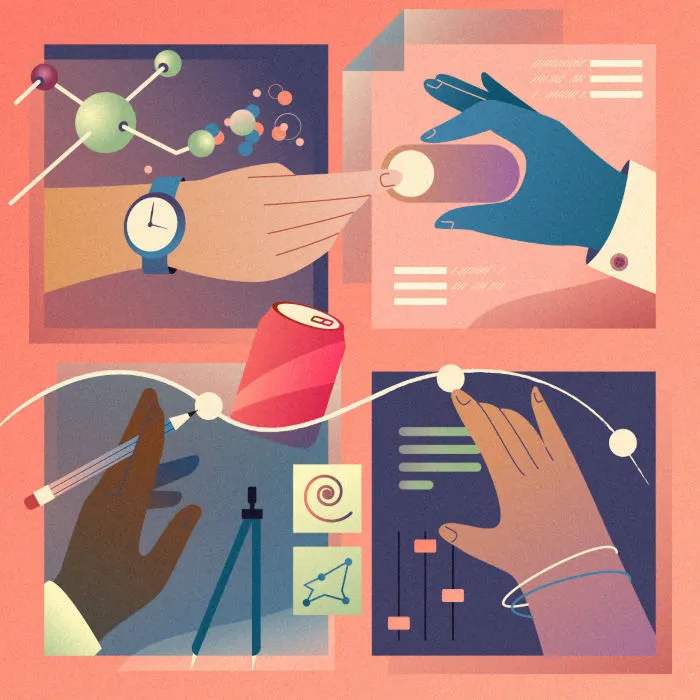
3 Perspectives That Widen Our Understanding and Lead to Better Decision-Making
A holistic approach to gaining a balanced viewpoint for more objective decision.
Author: Arthur Lankester
June 22nd, 2022
While we are not always conscious of it, we tend to be myopic when it comes to understanding situations that happen to us. We often focus on what went wrong, what made us feel upset, or what we failed to achieve. We zoom in only on what we want to see, unconsciously or not, creating a tunnel vision that prohibits us from getting a holistic view of the situation. So when making decisions, we often base our choices solely on our own perspectives. More often than not, this leads to wrong judgment and conflicts.
Whether in our personal relationships or in the workplace, we need to develop a more balanced viewpoint of situations to avoid negative biases and conflicts. We can only do so when we learn to view things from three different perspectives. Doing so will enable you to make well-thought-out decisions and resolve conflicts constructively.
The Three Perspectives
1st Perspective: Me, Myself, and I
This is the egocentric view of situations. It considers only your own experiences, your own viewpoint. It’s focused on how you feel or how the situation affected you in whatever aspect. It’s all about YOU.
While the first perspective can be positive when it provides an honest exploration of self, it can also be very limiting. You can get stuck in an unhealthy pattern you have created for yourself over the years. Or you may fall into the same story you’ve been spinning for years. When you limit your outlook to the first perspective, you are unable to empathise with others and gain an understanding of the situation.
Your own perspective also changes depending on the circumstances. Let’s say you get home from work very hungry. The first thing you’d notice at home is the food on the table. But if you came home from dinner out with friends, the food won’t attract you as much.
A similar thing happens at work. When you feel stressed or have been giving your best efforts on a project, you may construe any constructive criticism from a colleague as downright rejection or an offensive comment.
In cases of manpower or team performance concerns, the first perspective is not an effective way of understanding the situation and making decisions. Handling an employee who made a mistake, for instance, would require you to see things from other perspectives, especially if the employee is not working directly under you.
From your perspective, your view will likely show you how the employee’s mistakes caused glitches in your operations. You will probably see how that mistake casts you in a bad light as a leader. Clearly, this view will not allow you to see the whole picture accurately and could result in a decision that’s unfair to the employee concerned. Before you put forth your own opinion and make a decision, it would be best to hold off until you’ve analysed things with inputs from other perspectives as well.
2nd Perspective: The Social View
The second perspective is taken from the viewpoint of the other person involved in the situation. It shows the other side of the story that may paint a completely different picture from what you see from your own point of view. Like the first perspective, this is an inaccurate and incomplete view of what transpires. But taken along with the other two, it gives you a clearer and more complete picture.
Your ability to evaluate opposing perspectives also impacts your ability to resolve conflicts—whether between you and others or among teams you lead. Learning to see situations through the second perspective also improves communication, as it enhances your ability to phrase your messages in a way that other people would understand.
Applying this perspective to the same manpower or team performance issue cited above, you will see a story as told by the employee who made a mistake. The narrative would be about what they did, why they did it, and other related circumstances that explain why things happened that way. Without generalising, this would likely give you a biased story in which the employee would have their own reasons for acting or deciding the way they did, resulting in the error. There’s a good chance that their narrative will include justifying their actions and pointing at other reasons for the mistake.
From this perspective, defences are up, and things are bound to get unpleasant, especially if the employee stands to lose their job or become subject to an HR disciplinary action. That’s why you need to make sure that you keep an open mind about the employee’s perspective. You will have to set aside your own personal view and objectively see the situation from the second perspective. This will allow you to communicate with less animosity. Consequently, you get more information to analyse the situation more accurately to come up with the most reasonable and beneficial decision.
3rd Perspective: The Camera Lens
The third perspective gives you the most objective viewpoint of what is happening. Think of it as a video camera that merely films the actions and details but does not fully capture the emotions. What you get are purely facts and logical narratives. This perspective provides the most unbiased view of situations. However, it still does not reveal everything that has transpired, including the effect of situations on the people involved.
You can evaluate events that transpire more accurately when you take a step back. It’s similar to disassociating from yourself and looking at both your and the other party’s actions and reactions. Then, you can assess what happened without any biases.
This is the most objective way to look at things. Instead of hearing the story from those involved, this allows you to view what happened from a ‘disinterested’ view. This basically means not taking sides and not considering any of your interests when examining and analysing what happened. In the case of the employee who made a mistake, viewing things from this perspective means taking note of your own personal view (1st perspective), understanding the employee’s story (2nd perspective), and putting together all the incident reports and witness accounts (3rd perspective).
Going through each of the three perspectives gives you a more balanced viewpoint. You can then go through the entire event that transpired with more objectivity. Consequently, this will help you determine the appropriate response.
Getting a Holistic View to Determine the Most Appropriate Response
There are more than two sides to a story. The way to arrive at the best decision in anything, from the simplest to the most complex, is you need to take your lens and focus it on the bigger picture. You need to look at each perspective and analyse the events and details according to the context in which they occurred.
All three perspectives are critical in giving you a more balanced viewpoint that will lead to the most appropriate response. The best way to understand and handle any situation is to objectively see things from the first, second, and third perspectives. In situations of conflict, whether at work or in personal relationships, this practice of looking at things from three perspectives will lead to a better understanding and a more acceptable resolution for all parties involved.

MEET THE AUTHOR
Arthur Lankester
Arthur Lankester is a passionate trainer and coach helping individuals and organisations in developing ‘transformational capabilities’. Simply said, Arthur help’s people to develop skills to go through complex personal or organizational changes’. Arthur is graduated (Msc.) Psychologist and Master of Business Administration.
You can count on us!
Discover how you can consciously practice leadership, decision-making and encourage your team to do the same through our trainings. Contact us today so we can customise this e-learning resource to suit your needs.
Add your email to the mailing list to get the latest updates.
Join Our Community
Stories
- Culture 4
- E-learning 1
- Leadership 4
- Personal development 2
- Transformation 5
- Vertical development 1





